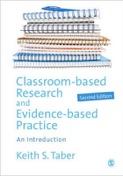Educational Research Methods

A site to support teaching and learning...

Nomothetic research
Research in one of the major traditions, or paradigms, of research is often referred to as nomothetic.
“Nomothetic research looks for general patterns and rules that once discovered will be expected to be widely applicable; whereas idiographic research recognises value in exploring the idiosyncrasies of the unique individual case” (Taber, 2013: 45)
"Windelband (1904) introduced his famous polarity in order to distinguish between two kinds of science, not between science and nonscience. The two kinds of science were what he called "sciences of law" (Gesetzeswissenschafren) and "sciences of events" (Ereigniswissenschaften). The former were "nomothetic", the latter "idiographic," but they were both sciences, both explanatory, although in different ways." 115
Danziger, K. (1995). Neither science nor history. Psychological Enquiry, 6(115-117).
The erklären tradition
Some times the term ‘erklären’ is used to describe research looking for law-like regularities:
“The scientist who engages in erklären tries to make explanatory sense of the phenomenon by finding the laws that govern it, whereas the scientist who engages in verstehen tries to make empathetic sense of the phenomenon by looking for the perspective from which the phenomenon appears to be meaningful and appropriate.”
Bransen, J. (2001). Verstehen and erklären, philosophy of. In N. J. Smelser & P. B. Baltes (Eds.), International Encyclopedia of the Social and Behavioral Sciences. (pp. 16165-16170). Oxford: Elsevier Science Ltd.
This is a personal site of Keith S. Taber to support teaching of educational research methods.
(Dr Keith Taber is Professor of Science Education at the University of Cambridge.)
2015
Taber, K. S. (2013). Classroom-based Research and Evidence-based Practice: An introduction (2nd ed.). London: Sage.
